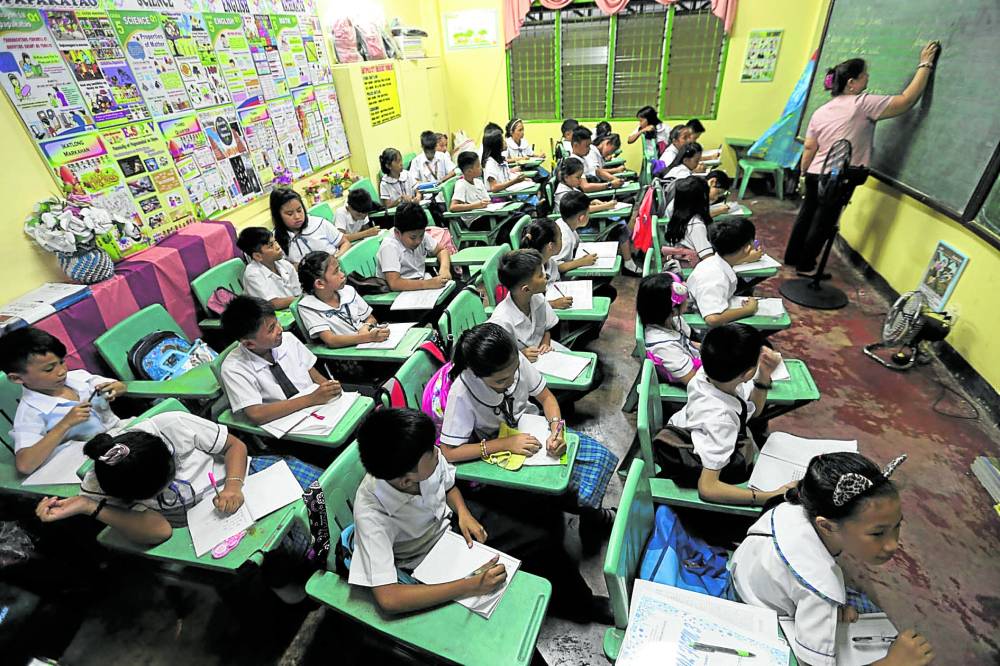Study: PH needs 7K classrooms yearly until 2040

The Philippines needs to build 7,000 classrooms annually for 15 years to solve the classroom shortage and secure long-term education access, the Philippine Institute for Development Studies (PIDS) said in a study.
The study found that the country needed around 108,000 new classrooms as of 2021, mostly for elementary schools. The deficit remains most severe in the National Capital Region (NCR), Calabarzon (Cavite, Laguna, Batangas, Rizal and Quezon), Central Luzon and regional centers like Cebu and Davao del Sur.
“If education is something important to us, as a nation, we should be able to put our heads together to address this issue,” said development economist Michael Ralph Abrigo, PIDS senior research fellow who led the study.
Fertility rate forecasts
The study used fertility rate forecasts under different scenarios and estimated future demand based on projected school enrollment and the school-age population.
Despite recent gains in managing fertility and improving infrastructure, school overcrowding remains widespread in urban and high-growth regions. In northern Manila alone, over 90 percent of elementary students are crammed into classes with 50 or more students, while nearby provinces like Rizal and Cavite also recorded congestion rates of 66 percent and 57.7 percent, respectively.
While declining birth rates may ease enrollment pressures nationally in the coming decades, PIDS said this will not benefit all regions. In the Bangsamoro Autonomous Region of Muslim Mindanao (BARMM), where the school-age population is projected to grow, demand for new classrooms will continue to rise.
Increasingly unsafe
“Outside NCR, public high school congestion by the share of students was most pronounced in Sulu (95.7 percent), followed by Maguindanao del Sur (76.8 percent), Maguindanao del Norte (74.8 percent) and Basilan (74.5 percent), which are all provinces of BARMM,” the study said.
The report also revealed that the majority of existing buildings are increasingly unsafe. As of 2023, around a quarter of concrete classrooms, half of wood-concrete hybrid rooms and 80 percent of wooden structures had outlived their expected lifespan. By 2040, nearly all wooden and mixed-material classrooms, and half of all concrete ones, will require replacement unless construction accelerates.
But funding and logistical hurdles persist. The average classroom takes three years to complete, with 60 percent of delays occurring during the planning stage due to unclear data, coordination gaps and a lack of suitable building sites, the study found.
National master plan
PIDS recommended a national master plan for classroom construction, updated regularly to anticipate future enrollment surges and regional needs. It also urged the government to consider alternative solutions, such as public-private education vouchers, shared classroom use and flexible school schedules.
Abrigo added that demographic shifts, if managed wisely, offer a golden opportunity for long-term growth. This goes beyond infrastructure, he said. With fewer dependents and a growing working-age population, the Philippines could reap a “demographic dividend,” but only through serious investments in education, health and job creation.
“The demographic dividend isn’t automatic—we must invest in human capital through education, health and employment to ensure our future workforce is ready,” Abrigo said.

















